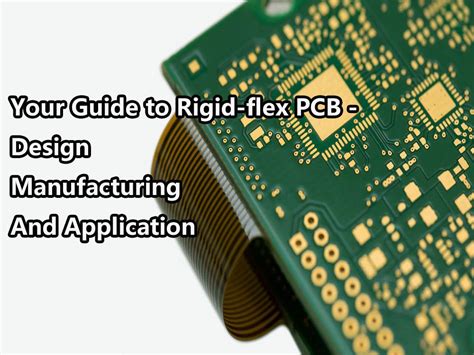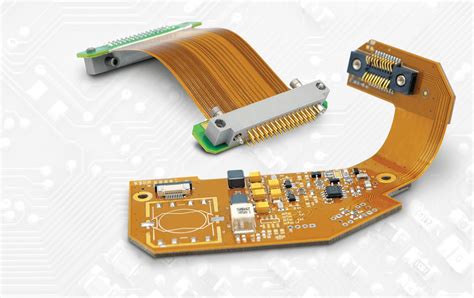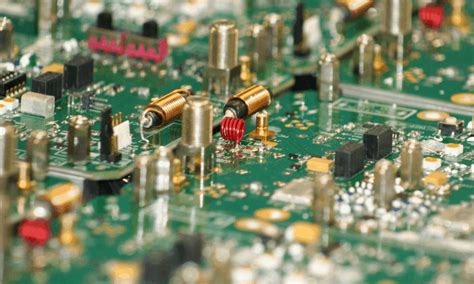Building Your PCB Board Company for Success in Prototyping
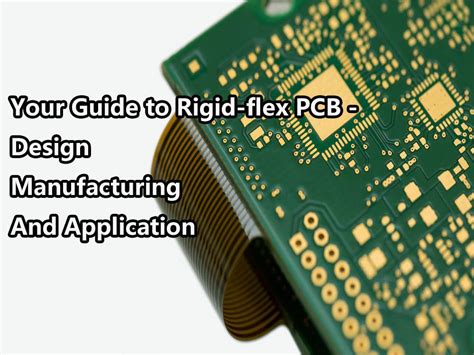
Key Takeaways
Establishing a successful PCB manufacturing company involves navigating various opportunities while addressing challenges specific to the industry. To thrive, you must first understand the unique dynamics of the PCB manufacturing market, which is influenced by rapid technological advancements and varying customer needs. Engaging with hobbyists and professionals alike will help you identify their specific requirements, allowing for tailored solutions that address their distinct challenges in prototyping.
In your journey, consider investing in essential equipment to enhance your pcb manufacturing capabilities. The right technology can significantly reduce your pcb manufacturing cost, making it feasible to offer competitive pricing without sacrificing quality. By focusing on efficient processes, you can streamline production while maintaining high standards.
Building relationships with suppliers is crucial for sourcing quality components, which will allow your pcb manufacturing business to operate at peak efficiency. Take time to establish partnerships that facilitate reliable sourcing of materials—this is particularly important in a market where the supply chain can be unpredictable.
Don’t overlook the importance of quality control; implementing robust measures ensures that every product leaving your facility meets rigorous standards. Your commitment to quality will not only enhance customer satisfaction but also solidify your reputation in the industry.
“Success in PCB prototyping hinges on both technical expertise and an unwavering commitment to excellence.”
Lastly, effective marketing strategies are vital for reaching your target audience. By understanding what drives enthusiasm within the hobbyist community while also addressing the needs of seasoned professionals, you position yourself strategically within a growing market. Embrace these takeaways as guideposts on your path to building a sustainable and successful PCB board company focused on prototyping.

Understanding the PCB Market: Opportunities and Challenges
Navigating the PCB manufacturing landscape can be both exciting and complex. As you embark on your journey to establish a pcb manufacturing business, it’s essential to recognize the myriad opportunities that lie ahead. With the rising demand for innovative electronic solutions, many pcb manufacturing companies are fulfilling the needs of both hobbyists and industry professionals. However, along with these opportunities come certain challenges that you must address effectively. One notable challenge is managing pcb manufacturing costs, which can fluctuate based on factors such as material availability and technological advancements. To remain competitive, developing a pivotal understanding of market trends and customer requirements is crucial. Adapting your production strategies to meet these demands while maintaining quality will set your company apart in a crowded marketplace. By staying informed and responsive to changes, you can position your pcb manufacturing venture for long-term success while supporting a growing community of electronic enthusiasts and professionals alike. For additional insights into quality fabrication processes, consider resources like Andwin PCB Assembly.
Essential Equipment and Technology for PCB Prototyping
To establish a successful PCB board company focused on prototyping, investing in the right equipment and technology is crucial. The foundation of any pcb manufacturing operation largely relies on advanced tools that guarantee precision and efficiency in production. Among the essential equipment, you should consider high-quality CNC machines, which facilitate intricate designs by cutting materials with outstanding accuracy. Additionally, adopting sophisticated soldering stations is essential for ensuring strong electrical connections, further enhancing the reliability of your prototypes. You may also explore the benefits of using pick and place machines, which automate component placement and significantly reduce labor costs associated with manual assembly.
When evaluating your pcb manufacturing cost, remember that integrating cutting-edge technology can optimize production workflows, leading to lower overhead expenses over time. Collaborating with pcb manufacturing companies that offer automation solutions might also help streamline your operations while maintaining quality standards. Emphasizing these technologies in your pcb manufacturing business not only positions you as a competitive player but also attracts clients who value precision and quality in their prototype development efforts.
Investing in such technologies positively impacts your ability to respond swiftly to client demands, ultimately propelling your PCB board company toward sustained success in an ever-evolving market landscape. Being at the forefront of these advancements enables you to cater to both hobbyists and professionals who seek reliable prototype solutions tailored to their specific needs.
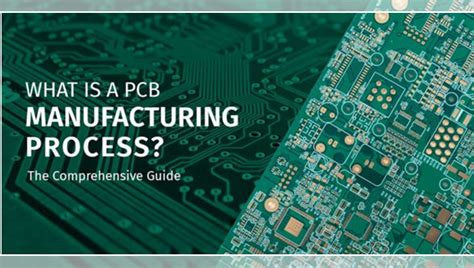
Building Strategic Partnerships for Component Sourcing
Establishing strategic partnerships is vital for the success of your PCB manufacturing business, especially when it comes to sourcing components. Collaborating with reliable suppliers can significantly impact your pcb manufacturing processes by ensuring you have access to high-quality materials at competitive prices. This not only affects the overall pcb manufacturing cost but also enhances the quality of your final products. When selecting pcb manufacturing companies, consider those that align with your quality standards and can meet your specific project needs effectively. Furthermore, forming relationships with multiple suppliers can provide you with flexibility and reduce risks associated with supply chain disruptions. It is important to assess their reliability and capability regularly, ensuring they can meet your demands as your business scales. By focusing on building these essential partnerships, you position your PCB board company to adapt to market changes and maintain a competitive edge in the prototyping landscape, ultimately facilitating better service for both hobbyists and professionals alike.
Quality Control Measures in PCB Production
Implementing effective quality control measures in PCB production is crucial for achieving consistency and reliability in your finished products. As you venture into the pcb manufacturing business, focusing on various aspects of quality assurance will enable you to meet the expectations of both hobbyists and professionals who rely on your services. Start by adopting rigorous testing protocols, including functional testing, visual inspections, and automated optical inspections (AOI), to catch defects early in the production process. This ensures that each board produced meets high standards and minimizes costly rework—effectively controlling your pcb manufacturing cost. Additionally, engaging with reputable pcb manufacturing companies can help you establish a framework of best practices centered around quality. By fostering a culture of excellence within your team and maintaining open communication with suppliers, you can enhance collaboration that benefits your overall manufacturing outcomes. Investing in training for your staff on new technologies and quality standards will continually elevate the performance of your production line, ultimately giving you a competitive edge in the evolving market of PCB prototyping.

Streamlining Production Processes for Efficiency
To enhance your pcb manufacturing business, it is crucial to focus on streamlining your production processes for maximum efficiency. Implementing automated systems can significantly reduce manual labor and minimize errors in the production line. Moreover, utilizing advanced software solutions for pcb manufacturing companies can optimize layouts and workflows, thus shortening lead times and lowering pcb manufacturing costs. Establishing a well-defined workflow that begins with prototyping can also improve the overall quality of your products; this process allows you to identify any design flaws early on, saving both time and resources. Additionally, consider cross-training employees to enhance their skills across various stages of production, which will enable your team to adapt quickly to changes in demand or technology. Embracing lean manufacturing principles will not only help eliminate waste but also foster a culture of continuous improvement within your organization, setting a solid foundation for long-term success in the highly competitive pcb manufacturing market. Ultimately, refining these processes is essential not just for meeting client expectations but also for solidifying your reputation as a reliable provider in the prototyping sector.
Marketing Your PCB Board Company to Hobbyists and Professionals
To successfully market your PCB board company, you need to understand the distinct needs of both hobbyists and professionals. Each group approaches pcb manufacturing differently, influencing their choice of pcb manufacturing companies. For hobbyists, cost-effectiveness is paramount, often leading them to prioritize the pcb manufacturing cost over other factors. Conversely, professionals might seek higher quality or advanced features, even if that means a steeper price.
To effectively reach these diverse audiences, consider utilizing a blend of traditional and digital marketing strategies. Creating engaging content—such as tutorials on PCB design or showcasing your prototyping process—can help draw in hobbyists. Meanwhile, attending trade shows can be invaluable for networking with professionals and showcasing the capabilities of your pcb manufacturing business.
A well-structured marketing plan should also include searchable keywords in your online presence to improve visibility among potential clients. Below is a simple table that outlines marketing strategies tailored for both segments:
| Audience Type | Strategy | Focus Area |
|---|---|---|
| Hobbyists | Social Media Campaigns | Community Engagement |
| Professionals | Trade Shows and Networking | Industry Connections |
| Both | Content Marketing | Educational Resources |
By incorporating these tailored approaches into your marketing plan, you’ll be better positioned to build a loyal customer base, enhancing the growth of your pcb manufacturing business while catering adeptly to the unique demands of both hobbyists and professionals alike.
Case Studies: Successful PCB Prototyping Enterprises
Examining successful PCB manufacturing enterprises can provide you with invaluable insights into optimizing your own pcb manufacturing business. For instance, companies like XYZ Circuits have leveraged partnerships with various pcb manufacturing companies to ensure a reliable supply of components, thus significantly reducing pcb manufacturing costs. Their approach to quality control, which includes rigorous testing and validation processes, is a cornerstone of their production efficiency. Similarly, ABC Electronics has distinguished itself by investing in advanced technology that streamlines their processes, allowing for quick turnaround times on prototypes without compromising on quality. By adopting best practices from these case studies, you can enhance your own strategies and better navigate the complexities of the pcb manufacturing landscape. Integration of these lessons learned will ultimately improve both your product offerings and customer satisfaction in a competitive market.
Future Trends in PCB Technology and Production
As you navigate the dynamic landscape of PCB manufacturing, it’s crucial to stay ahead by recognizing emerging trends that can influence your pcb manufacturing business. One significant trend is the growing demand for flexible PCBs, which offer greater design flexibility and are being increasingly utilized in portable devices. Another area of focus is the integration of IoT (Internet of Things) technologies, pushing pcb manufacturing companies to accommodate more complex designs that support connectivity and smart functionalities. Additionally, advancements in material science are leading to innovative substrates that enhance performance while reducing costs. This evolution impacts the pcb manufacturing cost, fostering a competitive edge for those who adapt quickly. Furthermore, sustainability practices are becoming imperative; yours could be a frontrunner by adopting energy-efficient processes and materials that meet environmental standards. By aligning with these trends, your company can not only meet current market demands but also position itself as a leader in the future of PCB production.

Conclusion
Establishing a successful PCB manufacturing company requires a clear understanding of the unique challenges and opportunities within the market. As you navigate the landscape of PCB manufacturing companies, focus on integrating the latest technologies and methodologies to ensure that your prototypes stand out. Strategically managing pcb manufacturing costs will be crucial; thus, investing in high-quality materials and efficient production processes is essential. Consider forging strong partnerships with suppliers, as this can lead to improved reliability and reduced costs over time, ultimately benefiting your pcb manufacturing business. By embracing best practices in quality control and streamlining your operations, you’ll not only enhance the production efficiency but also position your company as a trusted name among hobbyists and professionals alike. With a forward-thinking approach, you’ll set the foundation for long-term success in this evolving industry.
FAQs
What is PCB manufacturing?
PCB manufacturing refers to the process of creating printed circuit boards used in electronic devices. It involves designing, fabricating, and assembling various components onto the board.
What should I consider when selecting PCB manufacturing companies?
When selecting pcb manufacturing companies, consider their experience, technology used, quality assurance processes, and customer reviews. It’s essential to choose a company that aligns with your specific prototyping needs.
How is the pcb manufacturing cost determined?
The pcb manufacturing cost is determined by several factors, including material quality, complexity of the design, size of the board, and the volume of production. Understanding these elements will help you budget effectively for your pcb manufacturing business.
What are some best practices in PCB prototyping?
Best practices in PCB prototyping include choosing reliable materials, thorough testing before production, and clear communication with your PCB manufacturer to ensure accuracy and quality.
Is there a difference between standard and custom PCB manufacturing?
Yes, standard PCBs are mass-produced using common designs and specifications. In contrast, custom pcb manufacturing allows for tailored designs that meet specific functional requirements or unique applications.
For more detailed information on starting your own successful pcb manufacturing business, please click here: https://www.andwinpcb.com/pcb-manufacturing/

